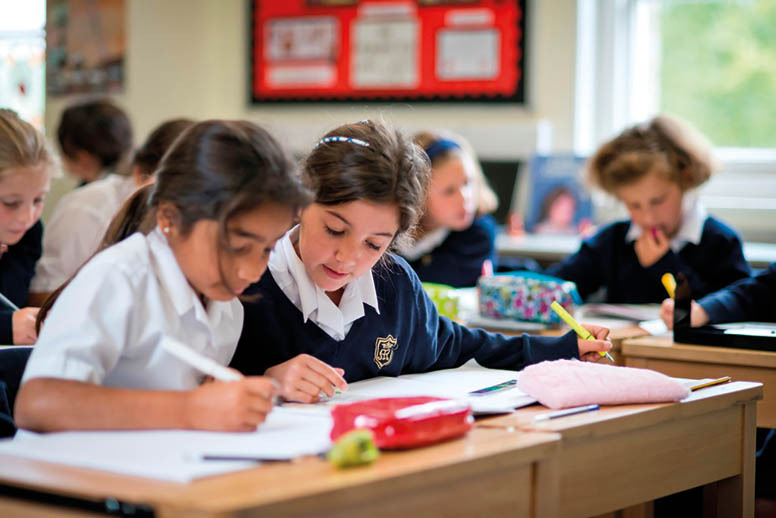Creativity should be central to the curriculum and to the process of how the curriculum is delivered rather than an extra, and we believe that all children are entitled to this broad and balanced curriculum. St Mary’s Junior School has implemented a core Creative Fusion Curriculum, which merges the traditional elements of independent learning with creativity, challenge and discovery.
A landmark 2007 report from the National College for School Leadership, called Lifting the lid on the creative curriculum, focused on four primary schools, each of which emphasised the importance of a creative curriculum in a di fferent way, and this report has inspired schools like ours to adopt this approach. Our broad curriculum allows our girls to explore and develop their personal talents and interests so they can reach their full academic and creative potential.
We have made a conscious decision to opt out of the early years foundation stage, which enables us to develop an Early Years curriculum that, right from the start, works in harmony with the curriculum approach across the whole school.
Our Fusion Curriculum seeks to deliver a 21st century education that will equip the girls with valuable skills while fostering a lifelong love of learning. The practical and cross-curricular approach of the Creative Fusion Curriculum at St Mary’s encourages children to explore ways in which to learn and to apply their knowledge with originality and purpose. The curriculum encourages creativity, critical and refl ective thinking, and produces excited, enthusiastic, enquiry-driven learners. It strives to be challenging to all children by stretching their intellectual capabilities, mainly through open-ended challenges and investigations. The Fusion Curriculum, developed by the Junior School leadership team, strives to nurture and develop the following characteristics and skills:
• Imagination – to be creative and resourceful
• Flexibility – to work on several ideas or address problems in di fferent ways
• Curiosity – to have enquiring minds
• Independence (alongside e ffective collaboration) – to take risks and make informed choices
• Tolerance – good communication to help girls handle conflict
• Trust – to value others’ opinions and have confidence in their own choices
• Application – to investigate topics using literacy, numeracy, science and ICT and transfer and apply knowledge in di erent contexts towards new and valuable goals.
As a school we feel that a balance has to be achieved between what we are learning, the curriculum content, and how we have learned this – the processes. Spanning this is the question of ‘how might we use this in our daily lives?’ – the practical application.
Our teaching approach, along with our small class sizes, allows us to provide our pupils with the individual attention that they deserve and need, as they undertake their learning journey. We place the utmost importance on emotional support and providing a caring environment in which our pupils can truly learn, develop and grow.
All of our teachers play a valuable role in this endeavour. One example of our Fusion Curriculum is the work which evolved from the topic of the Titanic, in Year 6. In geography, the girls studied glacier formation, in particular those in Greenland, and from a historical point of view, they investigated the class and social structure of Edwardian England and focused on the transoceanic migration that took place during this time, its reasons and the plight of people.
Science lessons were linked to materials and the properties of floating and sinking, and our STEM (science, technology, engineering, maths) coordinator worked with the girls to build boats to practically investigate the best hull shapes for maximum buoyancy.
In music they composed a piece that reflected the calm of night, the tragedy and the return to calm after the event. Creative writing, comprehension and reading were also key parts of the Titanic topic.
Central to the Fusion Curriculum is the need to also teach aspects of the curriculum that do not necessarily fit the topic, which are taught discretely. Therefore the girls continued their maths, French, Mandarin and RE topic work during this time.
On visiting the school you will see firsthand the creative, imaginative work that the girls have produced to support their topics from our Creative Fusion Curriculum covered throughout the school year.

